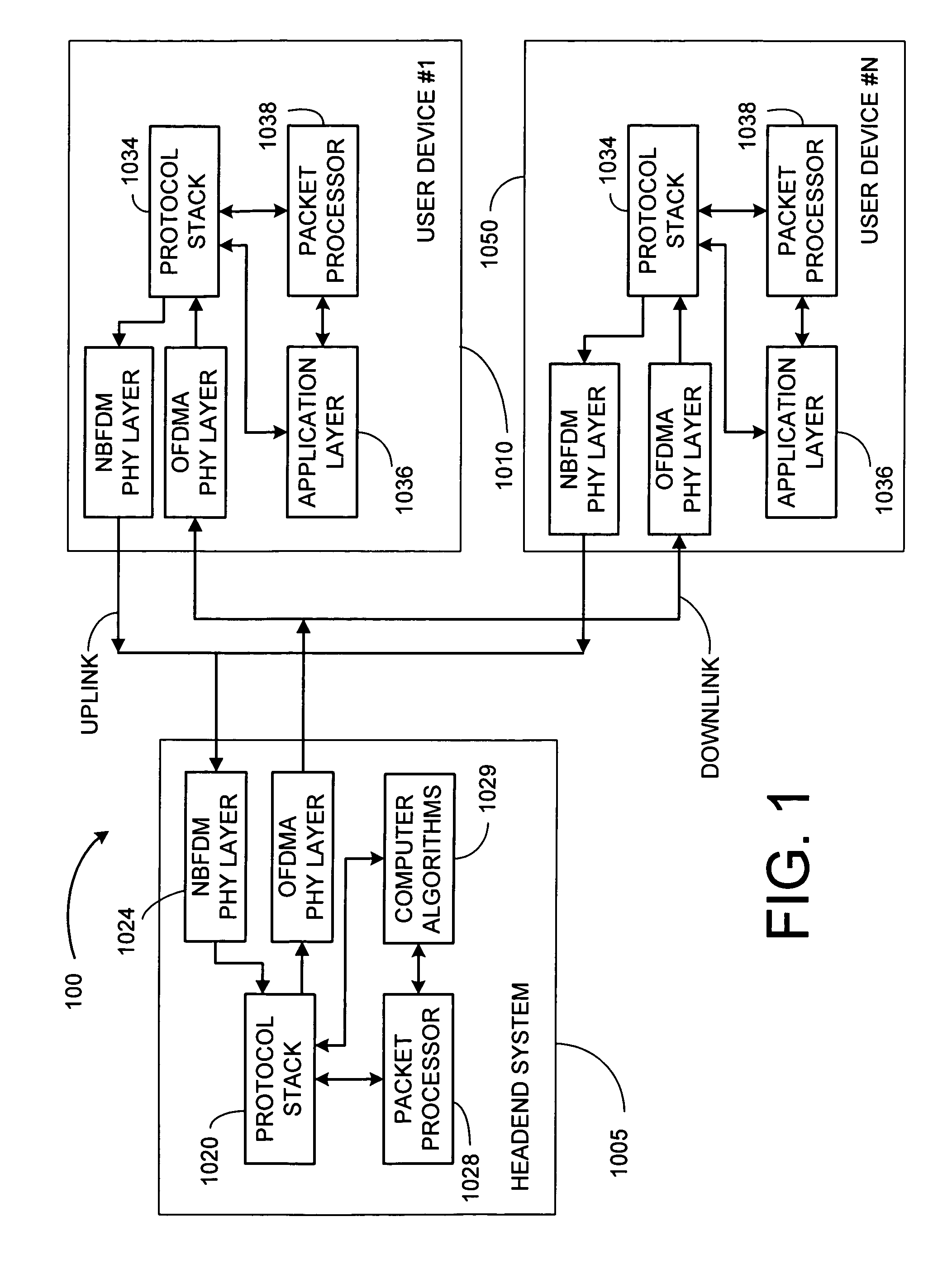Uplink modulation and receiver structures for asymmetric OFDMA systems
- Summary
- Abstract
- Description
- Claims
- Application Information
AI Technical Summary
Benefits of technology
Problems solved by technology
Method used
Image
Examples
embodiments and alternative embodiments
IX. Embodiments and Alternative Embodiments
[0257]Certain embodiments of the present invention involve wireless multiple-access communication systems where a headend communicates with a plurality of wireless subscriber stations. The plurality of wireless subscriber stations use frequency division multiplexing to share an uplink frequency bandwidth. The headend implements a method of communications. The headend simultaneously transmits in a downlink direction a plurality of downlink information signals to a plurality of wireless subscriber stations using an orthogonal frequency division multiplexed (OFDM) communication protocol. The headend also receives a non-orthogonal narrow band frequency division multiplexed uplink signal that comprises a plurality of uplink information signals that are modulated onto respective uplink tones. Respective ones of the plurality of uplink information signals are transmitted from respective ones of the plurality of wireless subscriber stations, and re...
PUM
 Login to View More
Login to View More Abstract
Description
Claims
Application Information
 Login to View More
Login to View More - R&D
- Intellectual Property
- Life Sciences
- Materials
- Tech Scout
- Unparalleled Data Quality
- Higher Quality Content
- 60% Fewer Hallucinations
Browse by: Latest US Patents, China's latest patents, Technical Efficacy Thesaurus, Application Domain, Technology Topic, Popular Technical Reports.
© 2025 PatSnap. All rights reserved.Legal|Privacy policy|Modern Slavery Act Transparency Statement|Sitemap|About US| Contact US: help@patsnap.com



